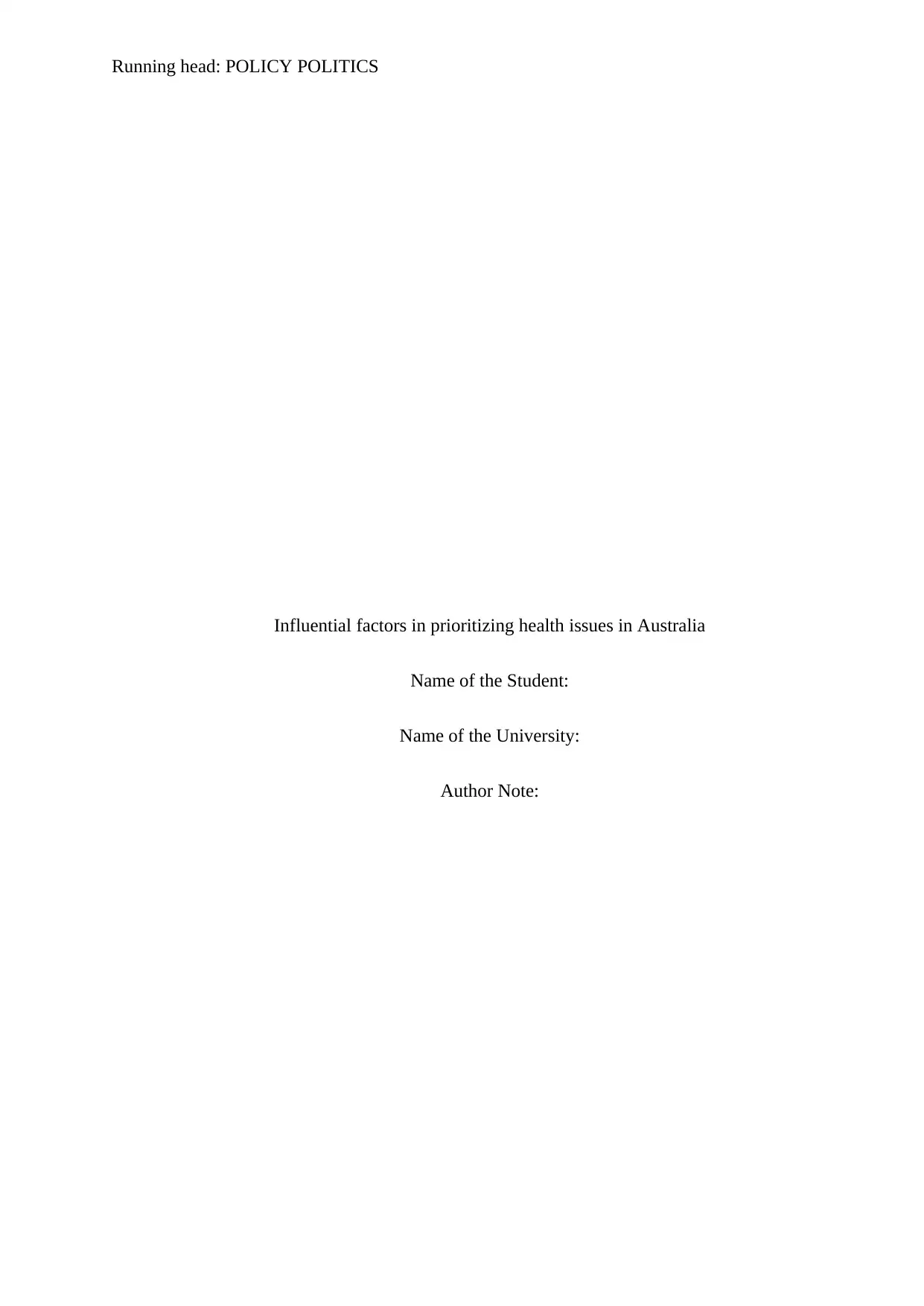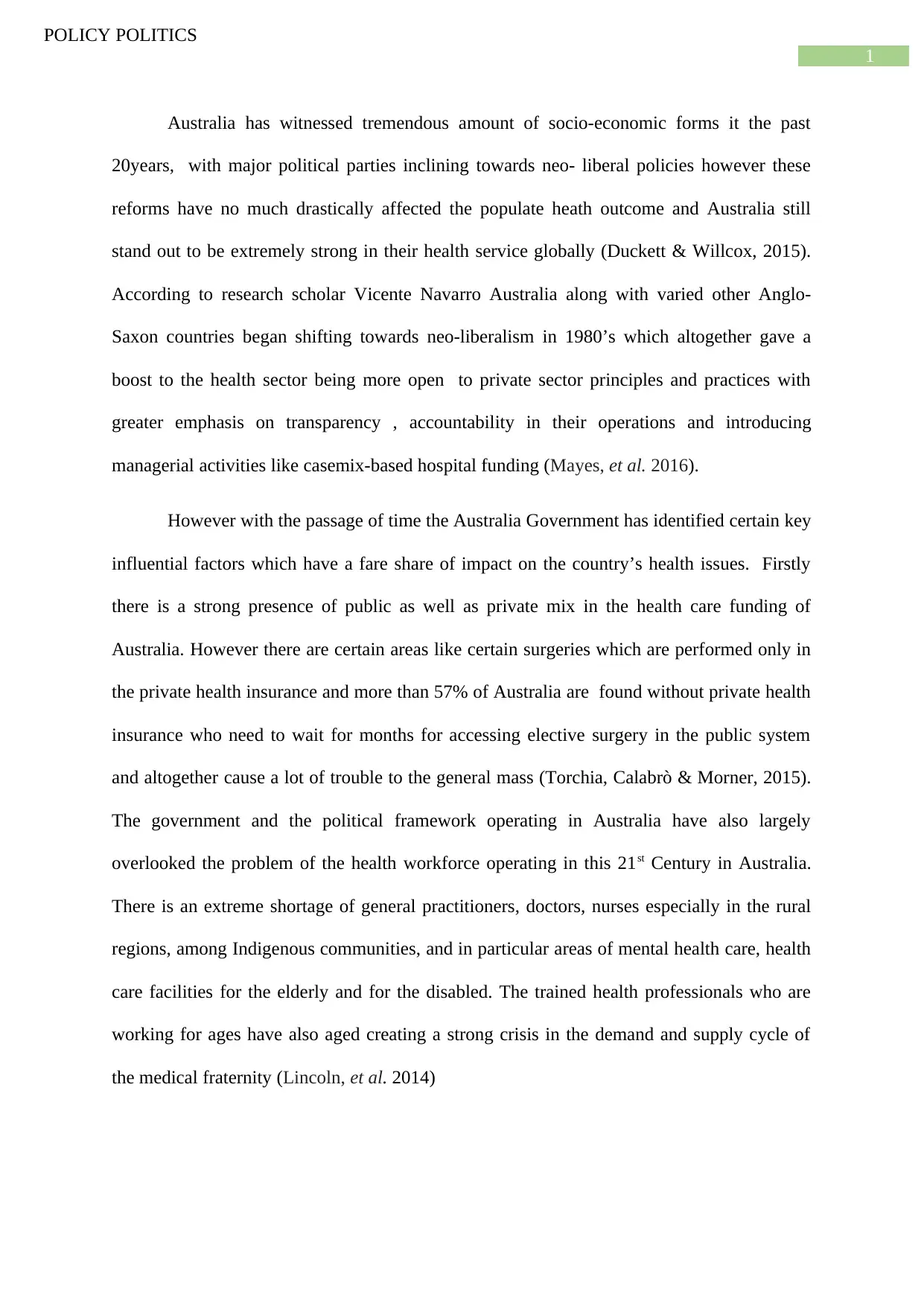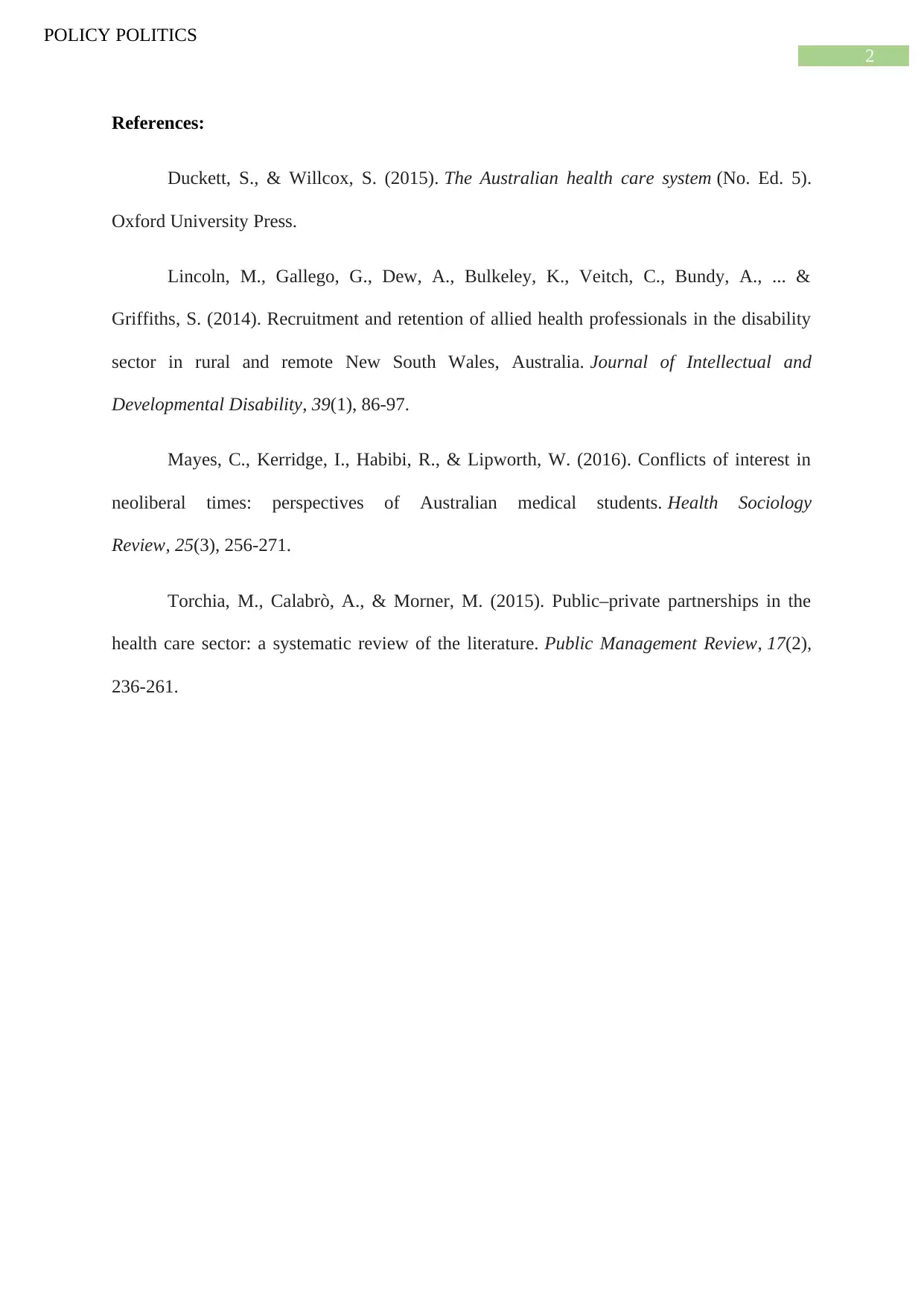Prioritizing Health Issues in Australia: A Detailed Analysis
VerifiedAdded on 2022/09/15
|3
|555
|17
Report
AI Summary
This report provides an analysis of the influential factors impacting health issues in Australia. It examines the dynamics of public and private healthcare funding, highlighting the challenges faced by the Australian healthcare system. The report discusses the shortage of healthcare professionals, particularly in rural areas, and the implications of an aging workforce. It also delves into the impact of political and economic factors, such as neoliberal policies, on healthcare delivery and the prioritization of health issues. The report references scholarly sources to support its findings and offers a comprehensive overview of the complexities within the Australian healthcare landscape, focusing on the need for improved access to elective surgeries, and the critical need to address shortages in the healthcare workforce.
1 out of 3




![[object Object]](/_next/static/media/star-bottom.7253800d.svg)